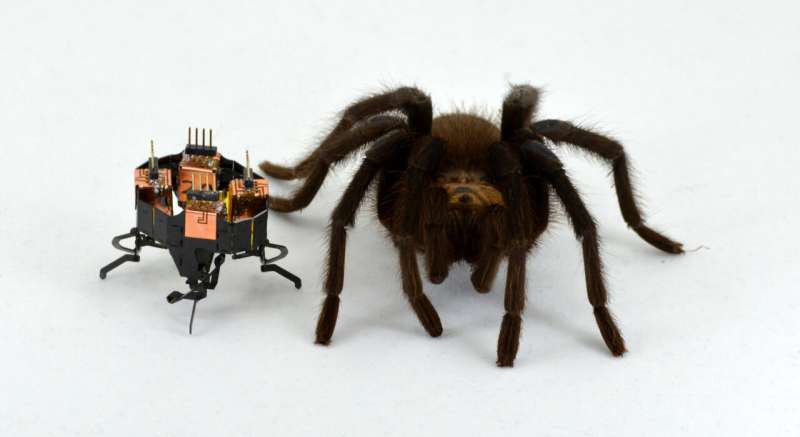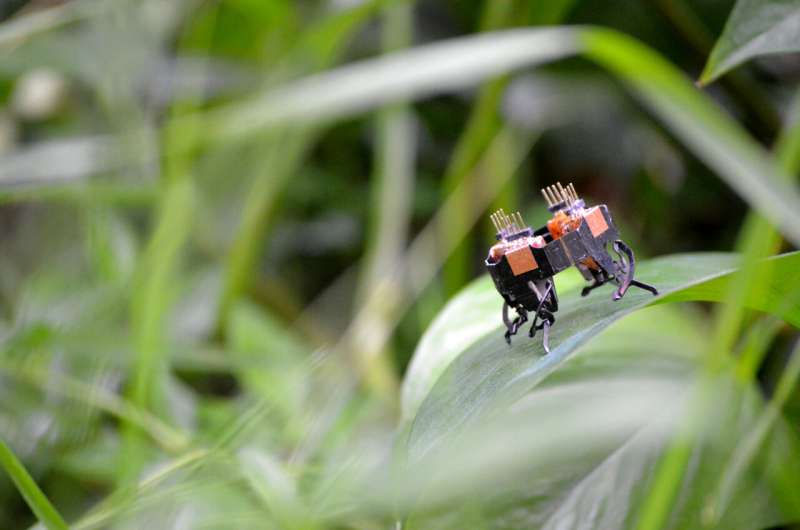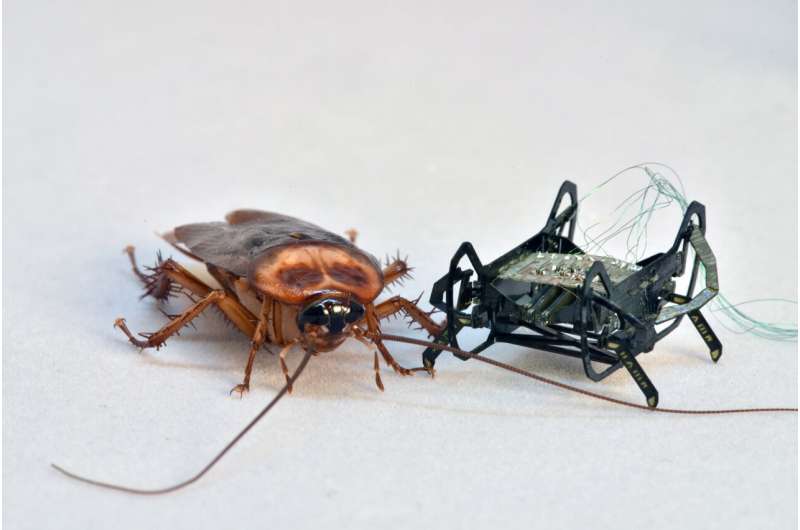This article has been reviewed according to Science X's editorial process and policies. Editors have highlighted the following attributes while ensuring the content's credibility:
fact-checked
peer-reviewed publication
trusted source
proofread
Robots can't outrun animals. A new study explores why

The question may be the 21st century's version of the fable of the tortoise and the hare: Who would win in a foot race between a robot and an animal?
In a new perspective article, a team of engineers from the United States and Canada, including University of Colorado Boulder roboticist Kaushik Jayaram, set out to answer that riddle. The group analyzed data from dozens of studies and came to a resounding "no." In almost all cases, biological organisms, such as cheetahs, cockroaches and even humans, seem to be able to outrun their robot counterparts.
The researchers, led by Samuel Burden at the University of Washington and Maxwell Donelan at Simon Fraser University, published their findings last week in the journal Science Robotics.
"As an engineer, it is kind of upsetting," said Jayaram, an assistant professor in the Paul M. Rady Department of Mechanical Engineering at CU Boulder. "Over 200 years of intense engineering, we've been able to send spacecraft to the moon and Mars and so much more. But it's confounding that we do not yet have robots that are significantly better than biological systems at locomotion in natural environments."
He hopes that the study will inspire engineers to learn how to build more adaptable, nimble robots. The researchers concluded that the failure of robots to outrun animals doesn't come down to shortfalls in any one piece of machinery, such as batteries or actuators. Instead, where engineers might falter is in making those parts work together efficiently.
This pursuit is one of Jayaram's chief passions. His lab on the CU Boulder campus is home to a lot of creepy crawlies, including several furry wolf spiders that are about the size of a half dollar.
"Wolf spiders are natural hunters," Jayaram said. "They live under rocks and can run over complex terrain with incredible speed to catch prey."
He envisions a world in which engineers build robots that work a bit more like these extraordinary arachnids.
"Animals are, in some sense, the embodiment of this ultimate design principle—a system that functions really well together," he said.

Cockroach energy
The question of "who can run better, animals or robots?" is complicated because running itself is complicated.
In previous research, Jayaram and his colleagues at Harvard University designed a line of robots that seek to mimic the behavior of the oft-reviled cockroach. The team's HAMR-Jr model fits on top of a penny and sprints at speeds equivalent to that of a cheetah. But, Jayaram noted, while HAMR-Jr can bust a move forward and backward, it doesn't move as well side-to-side or over bumpy terrain. Humble cockroaches, in contrast, have no trouble running over surfaces from porcelain to dirt and gravel. They can also dash up walls and squeeze through tiny cracks.

To understand why such versatility remains a challenge for robots, the authors of the new study broke these machines down into five subsystems including power, frame, actuation, sensing, and control. To the group's surprise, few of those subsystems seemed to fall short of their equivalents in animals.
High-quality lithium-ion batteries, for example, can deliver as much as 10 kilowatts of power for every kilogram (2.2 pounds) they weigh. Animal tissue, in contrast, produces around one-tenth that. Muscles, meanwhile, can't come close to matching the absolute torque of many motors.
"But at the system level, robots are not as good," Jayaram said. "We run into inherent design trade-offs. If we try to optimize for one thing, like forward speed, we might lose out on something else, like turning ability."
Spider senses
So, how can engineers build robots that, like animals, are more than just the sum of their parts?
Animals, Jayaram noted, aren't split into separate subsystems in the same way as robots. Your quadriceps, for example, propel your legs like HAMR-Jr's actuators move their limbs. But quads also produce their own power by breaking down fats and sugars and incorporating neurons that can sense pain and pressure.
Jayaram thinks the future of robotics may come down to "functional subunits" that do the same thing: Rather than keeping power sources separate from your motors and circuit boards, why not integrate them all into a single part? In a 2015 paper, CU Boulder computer scientist Nikolaus Correll, who wasn't involved in the current study, proposed such theoretical "robotic materials" that work more like your quads.
Engineers are still a long way away from achieving that goal. Some, like Jayaram, are making steps in this direction, such as through his lab's Compliant Legged Articulated Robotic Insect (CLARI) robot, a multi-legged robot that moves a little like a spider. Jayaram explained that CLARI relies on a modular design, in which each of its legs acts like a self-contained robot with its own motor, sensors and controlling circuitry. The team's new and improved version called mCLARI can move in all directions in confined spaces, a first for four-legged robots.
It's one more thing that engineers like Jayaram can learn from those perfect hunters, wolf spiders.
"Nature is a really useful teacher."
More information: Samuel A. Burden et al, Why animals can outrun robots, Science Robotics (2024). DOI: 10.1126/scirobotics.adi9754
Journal information: Science Robotics
Provided by University of Colorado at Boulder





















